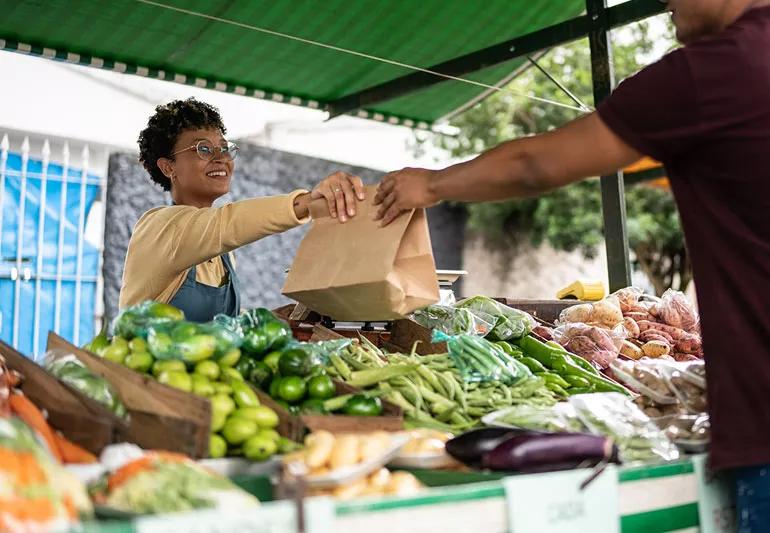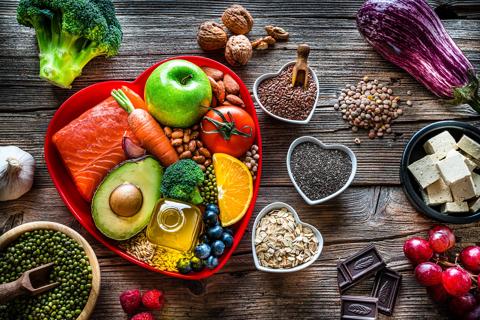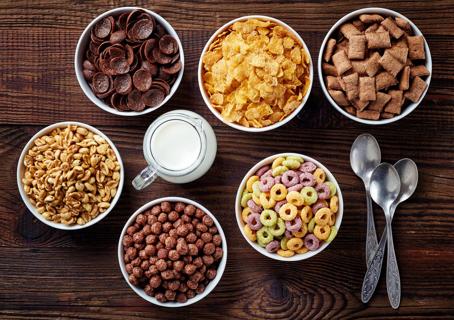When nutritious foods are hard to come by, your health can suffer

Eating a variety of fruits, vegetables, lean proteins and whole grains is one of the most important ways to keep your body healthy. (That, along with exercising, managing your stress and getting enough sleep, of course.)
Cleveland Clinic is a non-profit academic medical center. Advertising on our site helps support our mission. We do not endorse non-Cleveland Clinic products or services. Policy
But making healthy food choices isn’t always easy — especially when you don’t have ready access to foods that provide your body with the vitamins, minerals and other nutrients it needs.
“When you live in a place where healthy foods are hard to find or not cost-effective to buy, you tend to eat less-nutritious options. And that can have serious consequences for your health,” says Lee Kirksey, MD, a vascular surgeon and community health advocate.
When high-quality, nutritious foods are out of reach, it’s called food insecurity. And its effects can leave entire communities at risk for poor health.
We talked with Dr. Kirksey about the effects of food insecurity and food deserts and advice for what can be done to improve your health — even when your options for healthy eating are limited.
When you hear terms like “food insecurity,” you may picture bare cupboards and going to bed on an empty stomach day after day. Having to go without food or not knowing where your next meal will come from is certainly one kind of food insecurity.
But the problem doesn’t end there.
The U.S. Department of Agriculture (USDA)’s definition of food insecurity is, “the limited or uncertain availability of nutritionally adequate and safe foods, or limited or uncertain ability to acquire acceptable foods in socially acceptable ways.”
In other words, food insecurity can be a matter of not knowing if or when you’ll eat next. But it’s also a question of whether you have the means to get the healthy foods that your body needs.
“The lament is that in the United States, we see high rates of poverty that leave an inordinately large number of people without a household income to buy their food necessities,” Dr. Kirksey points out.
“And even for some people who don’t fall within those economic constraints, too many of them still don’t have the opportunity to get the healthy food their bodies need. What’s important to understand is that food security is more than people not having any access to food. It’s also about the social, economic and geographic barriers to accessing healthy, nutritionally dense foods.”
Where you live makes a big difference in your access to healthy foods. Dr. Kirksey describes two kinds of communities where food insecurity is common.
Food deserts are communities where options for getting things like fresh fruits and vegetables is severely limited for residents.
Maybe there aren’t appropriate shopping options in the community. In some food deserts, people have to rely entirely on corner stores, convenience stores and gas stations for their groceries. And getting nutrient-rich foods from those stores can be challenging, if not outright impossible.
Or maybe there’s a grocery store with healthy produce within the community, geographically speaking — but you can’t get to it because of transportation challenges or other issues. And even if you can get to the store, the cost of healthy options may be out of your budget.
“What people often don’t understand about food deserts is that it doesn’t always mean there are zero options for food. It also can mean that healthy options aren’t within practical reach for the residents of the community,” Dr. Kirksey clarifies.
“In our busy day-to-day lives with all that we have going on, healthy eating decisions are most likely to be made when those choices are readily available and convenient.”
Under this definition, the options available for healthy eating in a food desert depend on the resources of the individuals or families living there. So, while one household may be able to access and afford at least a minimum of healthy food options, their neighbors may not.
Food swamps are similar to food deserts in that access to healthy options can be limited. But the difference lies in food swamps’ extremely high number of things like fast food restaurants and high-calorie, highly processed meals and snacks.
Picture a food swamp like a teeter-totter. On one side is a 2-year-old representing nutrient-rich food. On the other side is an NFL linebacker representing “quick-and-easy” drive-throughs and packaged snacks.
The balance is clearly out of whack.
Sure, local produce may be available in a food swamp. But it’s outnumbered by “cheap and convenient” foods loaded with processed sugars and preservatives. Convenience over quality becomes the norm.
Your body needs healthy fats, protein, vitamins and minerals to run effectively. But when your access to healthy foods is limited, you fuel up instead on sugars, simple carbohydrates and high-calorie foods. Over time, these routine choices take a toll on your health.
“We know that if you have a diet that is high in sugar and saturated fats, you’re at a higher risk of a range of chronic conditions that can shorten your life span, reduce your overall quality of life, and reduce your cognitive and physical function,” Dr. Kirksey stresses. “Communities where healthy food options are limited often have greater incidence of these conditions.”
Among the effects of an unhealthy diet are:
Living with food insecurity, such as in a food desert or a food swamp, puts you at greater risk for these conditions. You may not necessarily go hungry, but your body can still be starved of the nutrition it needs.
Food insecurity is a societal issue. Generations of inequities have left communities without the resources they need to take charge of their health. Economic, transportation and geographic barriers prevent access to inexpensive and healthful food options in many under-resourced communities — both urban and rural.
But your health matters. And your health depends on eating a healthy diet that lowers your risk of chronic disease. You deserve it.
Dr. Kirksey offers these practical tips for improving your diet, even when your options are limited.
One effect of living in a food desert or a food swamp is that your view of healthy eating can become skewed. When healthy options are hard to find, you can become conditioned to not expect them — or be less likely to notice them when they’re there.
“Human behavior typically seeks out the relatively easier choice when we’re forced with making decisions. So, when you live in a community where there’s poor access to healthy alternatives, the easier choice is the choice that’s most readily available and the least expensive, which tends to be lower-quality food,” Dr. Kirksey explains.
Over time, those easy-to-find and easy-to-make foods become the norm. Your kids grow up on those foods. Entire neighborhoods subsist on those foods.
You might not even question their health implications. Because you might not even know the extent to which the foods you eat are affecting you. Or that there are better alternatives.
Consider this: In a survey of 1,000 American adults, 10% of responders chose fast food as the most heart-healthy diet. This despite a mountain of evidence to the contrary.
“It’s challenging for anyone to make healthier eating choices if you were never taught what good, healthy eating looks like or thought that was an option in your life,” Dr. Kirksey acknowledges. “We find that children in under-resourced communities have less ability than kids in more affluent communities to identify what a healthy diet looks like. That includes things like knowing what basic fruits and vegetables are and the role that they play within a healthy diet.”
At the macro-level, Dr. Kirksey encourages better nutrition education at the K-to-12 levels and healthy food subsidies for people in need.
At the household level, start with these resources from nutition.gov to start getting familiar with some healthy eating habits.
Dr. Kirksey adds that some communities have found ways to bring healthier foods to residents that you may not even be aware of.
Ask friends, family and local leaders about programs in your community, like:
“Many healthcare systems are also starting to have programs to teach people healthier eating habits and food preparation,” Dr. Kirksey notes. “Those can be good ways to learn new skills and talk with other members of your community.”
Through such programs, you may find that cooking healthy foods and finding healthy ingredients is easier and less expensive than you thought.
Traditional gardening can require a good amount of yard space, but it doesn’t have to be that way. Some fruits, vegetables and herbs can flourish in buckets and other containers without much yard space at all — even a windowsill or small balcony might do the trick.
Even if your outdoor area is limited, you can increase your access to fresh produce by doing it yourself. Some healthy foods that grow well in self-contained gardens include:
One of the best choices you can make for your health is to cut out sugary drinks. That includes things like juices and soda, even the diet kind. (And, bonus, it’s a money-saver, too.)
“Sweetened beverages and the proliferation and availability of those have added to our epidemic of diabetes,” Dr. Kirksey states. “What we drink is just as important as what we eat.”
He advises aiming for between 48 to 60 ounces of water each day.
Food insecurity is a big problem. It’s a societal issue and a risk to your health. But there are ways to take steps to better care for yourself and your family. Know that even small changes can make a big difference.
Learn more about our editorial process.

A change in diet won’t cure COPD — but getting to or maintaining a healthy weight will help

Eating more natural, whole foods can lower your risk of heart and cardiovascular diseases

Both are needed for a healthy body

Wrapped or sandwiched, try to choose fillings and condiments that are minimally processed, low in saturated fat and high in fiber

It depends on factors like your age, activity level and if you want to maintain, lose or gain weight

Genetics, metabolism and hormonal fluctuations can all make weight loss more difficult

There are better breakfast options, but if it’s got to be cereal, look for whole grains, high fiber and no added sugar

Working has its benefits, but it may require some modifications — and that’s OK

Your metabolism may torch 1,300 to 2,000 calories daily with no activity

A gentle touch in all the right places may help drain your sinuses